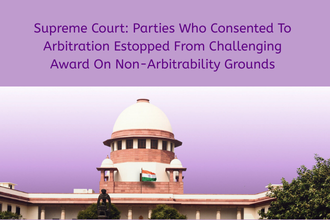Introduction
The Supreme Court of India, on September 20, 2025, ordered status quo in a significant case concerning the relocation of the Yale Tomb (Hynmers’ Obelisk) situated inside the Madras High Court premises. The order came while hearing an appeal against a Madras High Court judgment that had directed the Archaeological Survey of India (ASI) to shift the colonial-era structure outside the court campus.
The case—T Mohan vs. B Manoharan & Ors.—raises larger questions on heritage preservation, legal authority under the Ancient Monuments laws, and the judiciary’s role in determining the value of protected monuments.
Background of the Yale Tomb (Hynmers’ Obelisk)
The disputed structure, known as the Yale Tomb or Hynmers’ Obelisk, is more than 320 years old. It houses the graves of David Yale, son of Elihu Yale (the former Governor of Madras and benefactor of Yale University), and his close friend Joseph Hynmers.
Built in the early 1700s, the tomb was notified as a protected monument in 1921 under the Ancient Monuments Preservation Act, 1904. This gave it official recognition as a monument of national importance, preventing unauthorized alteration or removal.
The Madras High Court’s Rulings
The legal battle began in 2022, when advocate B Manoharan filed a petition before the Madras High Court, seeking a declaration that the tomb was not an ancient monument. He argued:
- The structure had no archaeological or artistic significance.
- Its mere existence for over three centuries did not automatically qualify it as a monument under the Ancient Monuments and Archaeological Sites and Remains Act, 1958 (AMASR Act).
- The continued presence of the tomb inside the court campus was inconvenient and symbolized a colonial legacy inconsistent with modern Indian values.
Single Judge’s Decision (July 2023)
The Madras High Court accepted these arguments, ruling that:
- The tomb was not of archaeological value.
- Its artistic merit was negligible.
- The ASI should shift the structure out of the court campus to an alternative site.
Division Bench Confirmation
The order was later challenged before a Division Bench of the Madras High Court, but the Bench upheld the single judge’s ruling, directing the ASI to relocate the tomb.
The Appeal Before the Supreme Court
The High Court’s decision was challenged in the Supreme Court. Senior Advocate Shyam Divan, appearing for the petitioner, made strong arguments in favor of heritage preservation.
Key Arguments by the Petitioner
- Notification of 1921 – The tomb was declared a protected monument under the 1904 Act, making it a structure of national importance.
- Judicial Overreach – Divan argued that courts should not reassess the archaeological value of a monument, as this falls within the domain of expert bodies like the ASI.
- Relocation Concerns – Even if not demolished, the relocation of the tomb would undermine its historical authenticity and could cause irreparable damage.
- Public Policy Issue – Once a monument is recognized as nationally important, the judiciary should not interfere on subjective grounds such as aesthetic or cultural preference.
Supreme Court’s Observations
The Bench comprising Justice Vikram Nath and Justice Sandeep Mehta noted that:
- The Madras High Court had only directed relocation, not demolition.
- However, relocation itself could have serious implications for heritage preservation.
Ultimately, the Court directed that status quo be maintained until further orders.
Legal Issues Involved
This case raises several important legal and constitutional issues:
1. Definition of “Ancient Monument”
Under Section 2(a) of the AMASR Act, 1958, an “ancient monument” includes any structure of historical, archaeological, or artistic interest which has been in existence for at least 100 years. The Yale Tomb, being over 300 years old, clearly falls within this definition.
2. Binding Effect of Government Notifications
The 1921 notification declaring the tomb as a protected monument remains legally valid. Once such a declaration is made, its reversal or modification requires statutory procedure, not judicial discretion.
3. Role of the Judiciary vs. Expert Bodies
The question arises whether courts can override the judgment of archaeological authorities. The Supreme Court has, in earlier cases, emphasized judicial restraint in areas requiring specialized expertise, such as environmental and heritage matters.
4. Balancing Heritage with Practicality
Courts must also consider whether colonial-era monuments within functioning judicial spaces should be preserved in situ, or whether relocation is permissible to meet contemporary needs.
Broader Implications of the Case
- Heritage vs. Modern Infrastructure – The outcome will set a precedent for handling colonial-era monuments within public institutions.
- Judicial Attitudes towards Colonial Legacy – The Madras High Court highlighted the need to shed a “slavish mindset”, suggesting that not all colonial structures deserve preservation.
- Preservation Standards – A ruling in favor of the petitioner could reinforce the sanctity of ASI notifications, limiting judicial intervention in heritage matters.
- Cultural Identity Debate – The dispute reflects India’s ongoing struggle to reconcile colonial history with post-independence identity.
Conclusion
The Supreme Court’s order to maintain status quo in the Yale Tomb dispute has bought time for careful consideration of a complex issue—should centuries-old colonial structures be preserved at their original locations, or can they be relocated to balance modern requirements?
While the Madras High Court viewed the tomb as a relic of little value, the petitioner insists that its protected status must be respected. The final decision will not only determine the fate of the Yale Tomb but will also shape the future of heritage conservation in India.
At its core, the case highlights the tension between historical preservation and contemporary relevance. As the Supreme Court examines the matter further, it must ensure that India’s heritage laws are interpreted in a way that protects both cultural legacy and judicial functionality.
For now, the Yale Tomb remains undisturbed, standing as a silent reminder of colonial history within the precincts of one of India’s oldest High Courts.
Also Read
Bhima Koregaon Case: Supreme Court Refuses to Modify Bail Condition for Varavara Rao
Air India Crash 2025: NGO Moves Supreme Court Seeking Independent Probe, Disclosure of Flight Data



